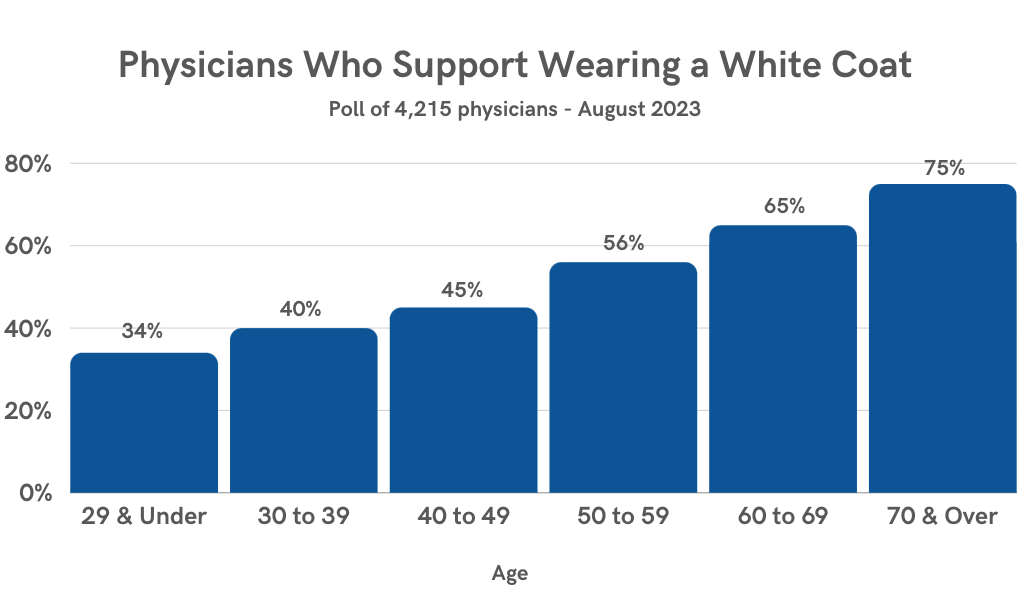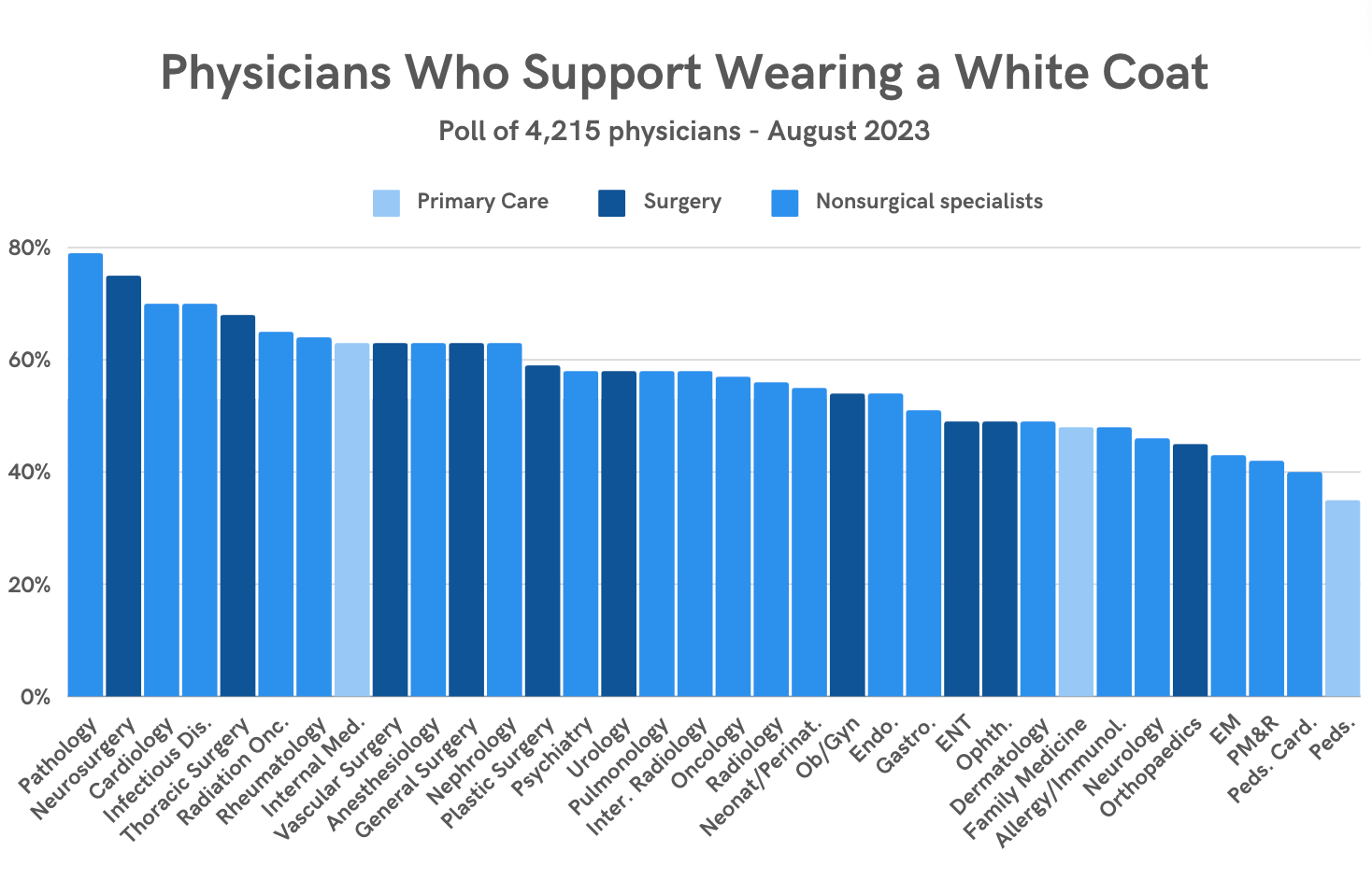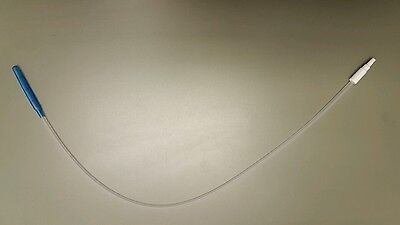Support for White Coats
-
https://www.doximity.com/articles/903d2957-12a4-4140-a2cf-eaf186755660


Of note: At the university it used to be that the color of your coat would identify you as to your status:
- White (short) coat - medical student
- Blue (long) coat - trainee/resident
- Grey (long) coat - attending physician.
Now, everyone wears white there.
In the community hospital, I saw few "lab" coats. I never wore one because I was always in scrubs.
-
In a smaller place, where pretty much everyone knows everyone, I'm not sure of the need - other than to carry your shit around: stethoscope (not around the neck, pleas), basic exam tools (opthalmoscope, otoscope) your phone, a book of your patients, the Merck Manual).
That is, if you examine your patients. These days, I'm not sure cardiologists know which end of a stethoscope to use.
But, in the comments in that thread, I found these:
I stopped wearing a white coat decades ago. As a consulting internist with a tall stature. I found patients were more comfortable and open when I did not wear a starched white coat. They were more likely to open up about worries, reveal the hints of functional illness and more open to dealing with the tough diagnoses. With the white coat I was perceived as intimidating, without the white coat, patients were more relaxed and open to discussing life style issues, life stresses, substance abuse. My ability to help these patients improved without the white coat.
A lot of discussion on how "everyone wears a white coat now."
I've seen new name tags with a photo of the person, their first (not last) name and "Physician" or "Nurse" below that.
-
FIL went to the ED via ambulance two nights ago. His problem was self-induced hypoglycemia, but even after the EMT gave some D10, he was still cognitively impaired.
He never saw the doctor in the ED. They did a catscan, drew troponin, BMP, BNP, CBC and put him on telemetry. After a few hours, the nurse walked in with his discharge papers.
-
I might start wearing a white coat to work and see what people say. Preferably not one of the ones that fasten at the back.
-
The nurse practitioner at my family practitioner wears one. My doctor doesn’t…
-
Why are their coats white when their rubber gloves are blue?
-
In a smaller place, where pretty much everyone knows everyone, I'm not sure of the need - other than to carry your shit around: stethoscope (not around the neck, pleas), basic exam tools (opthalmoscope, otoscope) your phone, a book of your patients, the Merck Manual).
That is, if you examine your patients. These days, I'm not sure cardiologists know which end of a stethoscope to use.
But, in the comments in that thread, I found these:
I stopped wearing a white coat decades ago. As a consulting internist with a tall stature. I found patients were more comfortable and open when I did not wear a starched white coat. They were more likely to open up about worries, reveal the hints of functional illness and more open to dealing with the tough diagnoses. With the white coat I was perceived as intimidating, without the white coat, patients were more relaxed and open to discussing life style issues, life stresses, substance abuse. My ability to help these patients improved without the white coat.
A lot of discussion on how "everyone wears a white coat now."
I've seen new name tags with a photo of the person, their first (not last) name and "Physician" or "Nurse" below that.
These days, I'm not sure cardiologists know which end of a stethoscope to use.
My primary care doctor is again “old school” in this regard. He still uses a stethoscope (which he carries around), one side to listen to the lungs, the other side to listen to the carotid arteries. He seems to train his interns this way too. :man-shrugging:
-
These days, I'm not sure cardiologists know which end of a stethoscope to use.
My primary care doctor is again “old school” in this regard. He still uses a stethoscope (which he carries around), one side to listen to the lungs, the other side to listen to the carotid arteries. He seems to train his interns this way too. :man-shrugging:
@Axtremus said in Support for White Coats:
He still uses a stethoscope (which he carries around), one side to listen to the lungs, the other side to listen to the carotid arteries
Actually, the diaphragm on the stethoscope (the flat side) is for hearing higher-pitched sounds, and the bell is for lower frequencies. There have been times when I couldn't hear a murmur with the bell, but with the diaphragm, yes.
Also, if i had listened to someone's heart or lungs through a piece of clothing, I would have failed that course. Today, everyone does it. Considering the availability of imaging, etc, the "art" of diagnosing someone with a physical exam is becoming lost.
As a side note, in the OR, I used to use an "esophageal" stethoscope. It was a long tube with a bladder at the end. I'd position it behind the heart in the esophagus. Amazing what you could hear when you're about 5 mm from the heart.

I had a custom earpiece that would attach to the stethoscope.